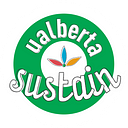Protecting Heritage in the face of Climate Change
Certificate in Sustainability alumna Vada Antonakis headed back to school to connect the dots between heritage buildings and climate resilience.
Originally published April 1, 2019.
Hi, I’m Amanda Rooney and in this series I will be tracking down graduates of the Certificate in Sustainability to find out what they’re up to post-graduation. I hope it instills some excitement in any current students for your own futures!
Picture yourself in Charlottetown, PEI, an iconic East Coast locale known for its picturesque coastline lined with rows of Victorian-era brick buildings and colourful houses. Now imagine these buildings being swept away by sea level rise and extreme storms…
For Vada Antonakis (BA 2016), who describes herself as someone dedicated to sustainability, this scenario is troubling.
Antonakis is an MSc student in urban and regional planning at the University of Alberta. Her research has been looking at climate change policy in Charlottetown. In particular she has been investigating how government policy applies to the city’s culturally significant heritage buildings.
“They are really important assets in our community and nobody’s really looking or thinking about how they’re being impacted,” said Antonakis.
Antonakis explains how buildings tell stories, embody identities and encourage social cohesion.
“Heritage buildings help attract people. They help create that sense of place and connect people with the spaces they live in, their identity, and makes them feel a sense of ownership, a sense of pride,” said Antonakis.
Luckily, passionate people like Antonakis are working on these urgent, emerging issues. And the issue goes beyond protecting culture. For Antonakis, the research is also about the environmental value in conserving resources through adaptive reuse.
“Instead of having to entirely rebuild something, you can keep its essence but reshape the building — maybe do some updates, some structural reinforcement and change the function,” said Antonakis. From the remains of a rundown industrial site, a building can come alive again as a vibrant community arts space or residential lofts.
Connecting Cultural Heritage and Financial Sustainability through Community Resilience
Before Antonakis began studying how communities and histories are embodied by buildings, she was interested in the nonprofit sector. Antonakis graduated from the University of Alberta with a BA in human geography and sociology. She also received a Certificate in Sustainability; her capstone project involved helping a nonprofit organization identify alternative and sustainable methods of funding.
“Volunteering is something that I had already been really passionate and engaged with. One of the biggest challenges with nonprofits is always funding, so how do they get the money to fill those gaps and needs in society, and how do they keep meeting their mission and mandate to keep the lights on in their building?” asked Antonakis.
At first, urban planning and heritage conservation might seem very different from nonprofit financing. But in both chapters of her life, Antonakis’ work has revolved around community and the resources that make communities resilient.
“The way that I looked at that is resilience is a part of sustainability. To be sustainable, you need to be resilient and you need to be able to bounce back — but you also need to be able to bounce back better,” said Antonakis.
Antonakis believes that healthy, well-rounded and vibrant communities are powerful assets in the face of climate change.
“Whatever field I end up in, I’d really like to go out and be that practitioner who is working in the world, and really help create healthy, sustainable communities through that urban planning lens,” said Antonakis.
Building Community Capacity
When Antonakis graduated in 2016, she almost immediately landed a job with Volunteer Alberta as their program manager. The position aligned nicely with her passion for community capacity building. If you have ever been in a Serving Communities Internship Program (SCiP), you have Volunteer Alberta to thank for facilitating that! Antonakis described the work she did there as being a connector of individuals, students and organizations.
For Antonakis, the Certificate in Sustainability was a stepping stone that gave her an edge when she applied for jobs after graduating. “The Certificate in Sustainability really helped me land a job after graduation.”
Antonakis has been an engaged volunteer since she was 14. This, in addition to her research experience, made her an ideal candidate for the job with Volunteer Alberta.
“It really helped me continue my own personal learning, my academic learning, and it was a really great way to connect with my own goals professionally and personally.”
When I asked Antonakis about her advice for current students thinking about their Certificate in Sustainability project, she responded: “Always bother. That’s my number one advice — go bother your prof, that’s what they’re there for.”
If you’re inspired by Vada, kick start your own career with the Certificate in Sustainability. It’s open to undergrads in most faculties, and can be completed without switching your current degree program.
